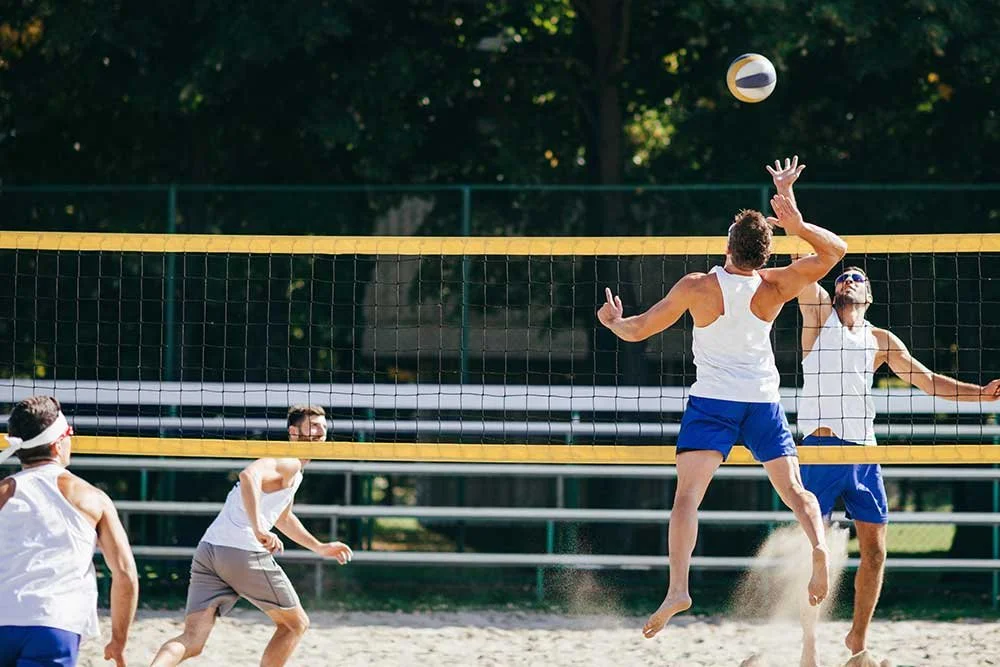Patellar Tendonitis vs. Jumper’s Knee: What’s Causing Your Summer Knee Pain?
By Dr. William Sterett, Orthopedic Surgeon at Vail-Summit Orthopaedics & Neurosurgery
As a board-certified orthopedic surgeon and sports medicine specialist in Vail, and Frisco, Colorado, I treat a wide range of summer sports injuries. One of the most common complaints I hear, especially from weekend athletes, pickleball players, and volleyball enthusiasts is sharp, persistent pain just below the kneecap. It often starts small but can worsen with jumping, running, or even just walking down stairs.
If you’ve recently picked up a paddle, joined a summer league, or hit the trail with new intensity, you might be dealing with patellar tendonitis—also known as jumper’s knee.
What Is Jumper’s Knee?
Jumper’s knee is a form of overuse injury that affects the patellar tendon—the thick cord of tissue that connects your kneecap (patella) to your shinbone (tibia). This tendon plays a key role in knee extension, allowing you to straighten your leg and absorb force during jumping and landing.
When repetitive impact overloads the tendon, it can lead to microtears, inflammation, and chronic pain. This condition is especially common in high-impact sports like volleyball, basketball, running, and more recently pickleball.
Signs of Patellar Tendon Pain
Whether you're playing competitively or just enjoying more activity in the summer sun, keep an eye out for symptoms like:
Pain directly below the kneecap
Stiffness or discomfort after activity
Swelling or tenderness at the front of the knee
Difficulty jumping, squatting, or walking downhill
If these symptoms sound familiar, it may be more than just sore muscles—it could be jumper’s knee caused by patellar tendonitis.
Summer Sports That Can Trigger It
With the rise of recreational sports, more adults are experiencing knee pain after pickleball, tennis, and other high-intensity summer activities. While these sports are great for fitness and fun, they can lead to patellar tendon pain—especially if you ramp up too quickly or skip proper warm-ups.
Jumper’s knee summer sports risk factors include:
Frequent jumping or rapid lunging (volleyball, basketball)
Sudden changes in direction (pickleball, tennis)
Hard playing surfaces and minimal recovery time
Tight quads or weak glutes contributing to poor mechanics
Treatment and Prevention Tips
Most cases of jumper’s knee respond well to conservative care if addressed early.
1. Rest and Modify Activity
Reduce or avoid activities that aggravate the tendon. Low-impact exercises like swimming or cycling can help maintain fitness while reducing stress on the knee.
2. Ice and Anti-Inflammatory Support
Icing the area and using anti-inflammatories can help manage pain and swelling during flare-ups.
3. Strengthening and Stretching
Targeted physical therapy is key. Strengthening the quads, glutes, and hamstrings—along with stretching tight hip flexors—can restore balance and reduce patellar strain.
4. Consider a Patellar Strap
A knee strap can help offload the tendon and provide pain relief during activity.
Real Patient Results
“I started playing pickleball four days a week this summer, and my knees were on fire afterward. Dr. Sterett diagnosed me with patellar tendonitis and got me into PT right away. With a few adjustments and some targeted exercises, I was back on the court without pain.”
— Mark L., Avon, CO
Don’t Let Summer Knee Pain Slow You Down
If you’re experiencing knee pain after pickleball, suspect patellar tendon pain from summer sports, or just want to avoid jumper’s knee during the summer, we can help.
At Vail-Summit Orthopaedics & Neurosurgery, we work with athletes of all ages and levels to diagnose, treat, and prevent overuse injuries before they become season-ending setbacks.
Contact us today to schedule an evaluation and keep your knees and your game strong all summer long.

